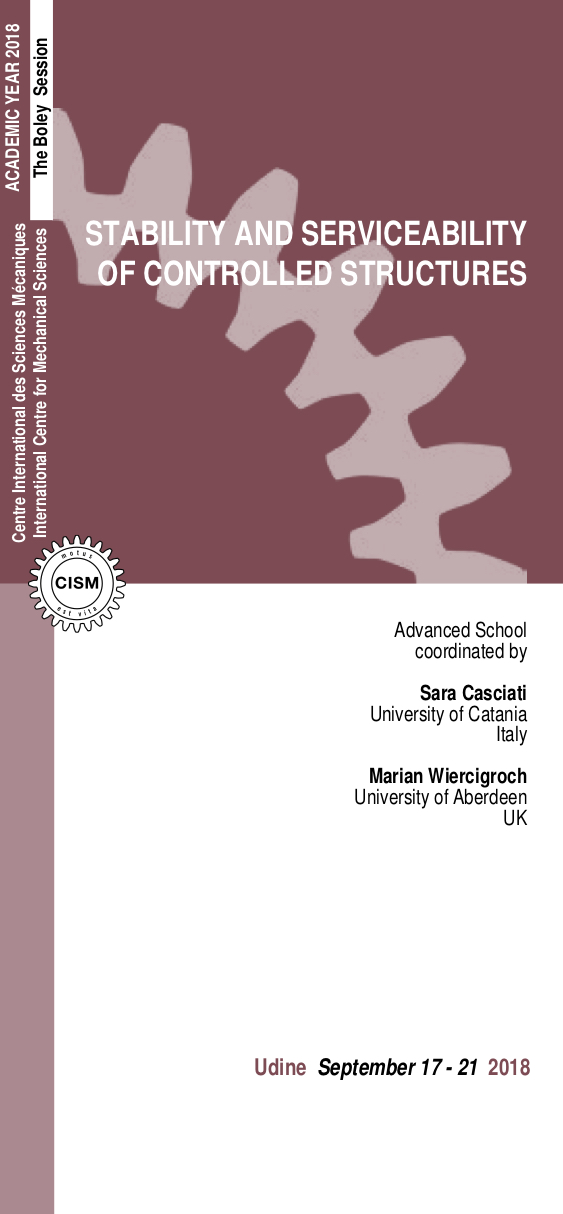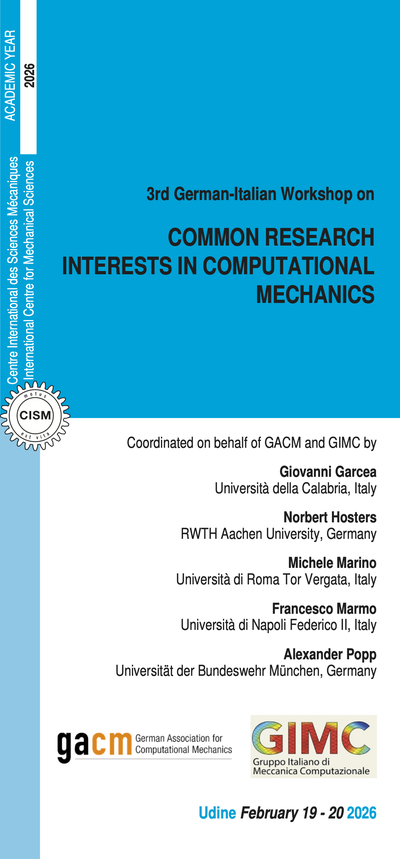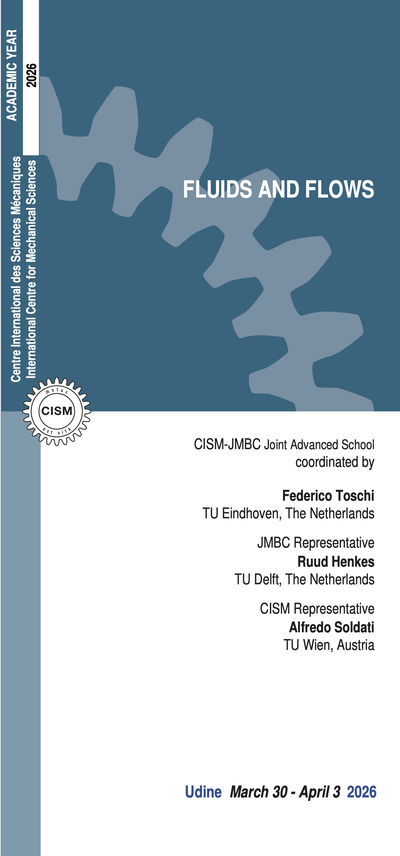Q. Cao, M. Wiercigroch, E. Pavlovskaia, J.M.T. Thompson and C. Grebogi. Piecewise linear approach to an archetypal oscillator for smooth and discontinuous dynamics. Philosophical Transactions of the Royal Society – Part A, vol. 366, 635–652, 2008.
Z. Hao, Q. Cao and M. Wiercigroch. Nonlinear dynamics of the quasi-zero-stiffness SD oscillator based upon the local and global bifurcation analyses. Nonlinear Dynamics, vol. 87, 987–1014, 2017.
A. Luongo and D. Zulli. Dynamic analysis of externally excited NES-controlled systems via a mixed Multiple Scale/Harmonic Balance algorithm. Nonlinear Dynamics, vol. 70(3), 2049-2061, 2012.
F. D'Annibale, G. Rosi, A. Luongo. Piezoelectric control of Hopf bifurcations: A non-linear discrete case study. International Journal of Non-Linear Mechanics, vol. 80, 160-169, 2016.
M. Krommer, Yu. Vetyukov, E. Staudigl. Nonlinear modelling and analysis of thin piezoelectric plates: Buckling and post-buckling behaviour. Smart Structures and Systems 18(1), 155-181, 2016.
E. Staudigl, M. Krommer, Yu. Vetyukov. Finite deformations of thin plates made of dielectric elastomers: Modeling, Numerics and Stability. Journal of Intelligent Material Systems and Structures, 2017.
F. Casciati, S. Casciati, L. Faravelli. A contribution to the modelling of human induced excitation on pedestrian bridges. Structural Safety 66, 51-61, 2017.
S. Casciati. Human induced vibration vs. cable-stay footbridge deterioration. Smart Structures and Systems 18(1), 17-29, 2016.
I. M. Díaz, E. Pereira, M. J. Hudson, P. Reynolds. Enhancing active vibration control of pedestrian structures using inertial actuators with local feedback control. Engineering Structures, 41, 157–166, 2012.
E. J. Hudson and P. Reynolds. Implications of structural design on the effectiveness of active vibration control of floor structures. Structural Control and Health Monitoring, 21(5), 685–704, 2014.
A. Staino and B. Basu. Emerging trends in vibration control of wind turbines: a focus on a dual control strategy. Philosophical Transactions of the Royal Society of London A: Mathematical, Physical and Engineering Sciences, 373(2035), 20140069, 2015.
A. Staino and B. Basu. Dynamics and control of vibrations in wind turbines with variable rotor speed, Journal of Engineering Structures 56, 58 – 67, 2014.
Subject: Vibration control of wind turbines
6 lectures on: wind turbines, fatigue load, vibration limits, pitch control, downtime, power curve.
Subject: Vibration controlled footbridges
6 lectures on: serviceability of footbridges, vibration control strategies, cable-stayed scheme, geometric nonlinearities, human induced loading, cable tension estimate, offline active control.
Subject: Stability and post-buckling behaviour of controlled smart structures
6 lectures on: controlled smart structures, piezoelectricity, dielectric elastomers, plates and shells, stability and post-buckling behaviour, stress and stability control.
Subject: Vibration controlled floor structures
6 lectures on: floor vibration serviceability, vibration-sensitive equipment, passive control, active control, vibration isolation, floor damping.
Subject: Dynamics, stability and control of the quasi-zero stiffness isolators
6 lectures on: nonlinear oscillators with quasi-zero-stiffness (QZS), bifurcation analysis, stability, dynamics and control, vibration isolation.
Subject: Stability of passively controlled structures using either nonlinear energy sinks or piezoelectric devices.
6 lectures on: Nonlinear Energy Sinks (NES), Multiple Scale Harmonic Balance Method, optimization; piezoelectric-based passive control strategies, bifurcation scenario, Hopf bifurcations, Ziegler’s column, principle of similarity, gyroscopic coupling.





